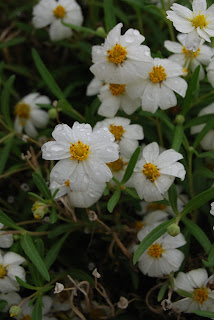MOUNT ELDEN ENVIRONMENTAL STUDY AREA
Flagstaff
I grew up in the projects outside of Hartford CT. As kids, the nearest semblance of the
great outdoors for my friends and I was “Clay Mountain”, a vacant lot across
the street, which the town folks used as an impromptu dump and summer car
burning venue. Next to chasing tar
trucks through our asphalt jungle, escaping to Clay Mountain, with its
scraggly, over-climbed trees, anemic scrub and festering pools of
tetanus-infused toxic waste, was our go-to destination for recreation. We thought we were the luckiest kids in the universe. Of course, we really weren’t allowed to go there, but, well, what can I say? Summer camp and trips
to fishing lakes had exposed us to the bigger wonders of Nature, but our worlds
were still too cloistered to grasp the concept that some kids actually lived
within walking distance of marvelous places with lots of trees.
 |
Grave of John Elden
|
Since then, my hiking habit has lead me to many easy-access,
kid-friendly and educational outdoor classrooms. One of my favorites is a familiar haunt to the lucky kids at
Flagstaff’s Christensen School.
Mount Elden Environmental Study Area is a maze of short exploratory
trails with intriguing names like “Forces of Nature” and “Walk Through
Time”. Located a stone’s throw
from busy Flagstaff Mall and just a short walk from the school, the easy trails
are intended to educate young and old alike about the natural and human history
unfolding at the base of Elden Mountain.
The trails are a wiggle through a concoction of volcanic boulders,
spring water, Ponderosa pines and blooming shrubs backed by a muffled
soundtrack of trains and traffic along Route 66. This forest-urban interface at the edge of a trailer park
where everybody has chickens, kind of reminds me of my childhood stopping
grounds---except without the biohazards---unless you count the underground gas
lines. Lucky kids. Yet, in the middle of all this
wonderful, walk-able wilds lies one not so lucky kid. Six-year-old John Elden,
(the youngest son of the family for whom the mountain is named) who in 1887 was
tragically killed by a renegade muleskinner’s errant bullet is buried beneath a
sprawling Alligator juniper tree along the main trail just beyond the spring at
the base of what was undoubtedly his own version of Clay Mountain.
 |
| Elden Spring |
LENGTH: 2.5
miles (I actually hiked on Pipeline up to Oldham trail and back to add a few
more miles, but, that’s not this story)
RATING: easy
ELEVATION:
6800’ – 7200’
FACILITIES: none, but there are restrooms and ice cream
(lucky kids) at the Mall.
GETTING THERE:
From Phoenix, travel north on I17 to Flagstaff. Drive into town and head east on
Route66/US 89 to the traffic signal at Flagstaff Mall. Turn left on Cummings and drive 0.2
mile to the Christensen School, veer left onto El Paso and go 0.3 mile to a
parking lot on the right across from Hamblin Road. The trailhead is the
unsigned, white gate.
HIKE DIRECTIONS:
From the trailhead, hike 0.25 mile uphill on the pipeline
road to a large wooden Elden Environmental Study Area sign. Turn right and follow the main path
that will lead to the spring, Elden homestead site and John Elden’s grave. A few yards beyond the gravesite turn
left and follow Pipeline Trail back to the trailhead. NOTE: explore
the many side trails at will. Just
return to the main path to complete the loop.
INFO: Flagstaff Ranger District, Coconino National Forest
MORE PHOTOS:





































